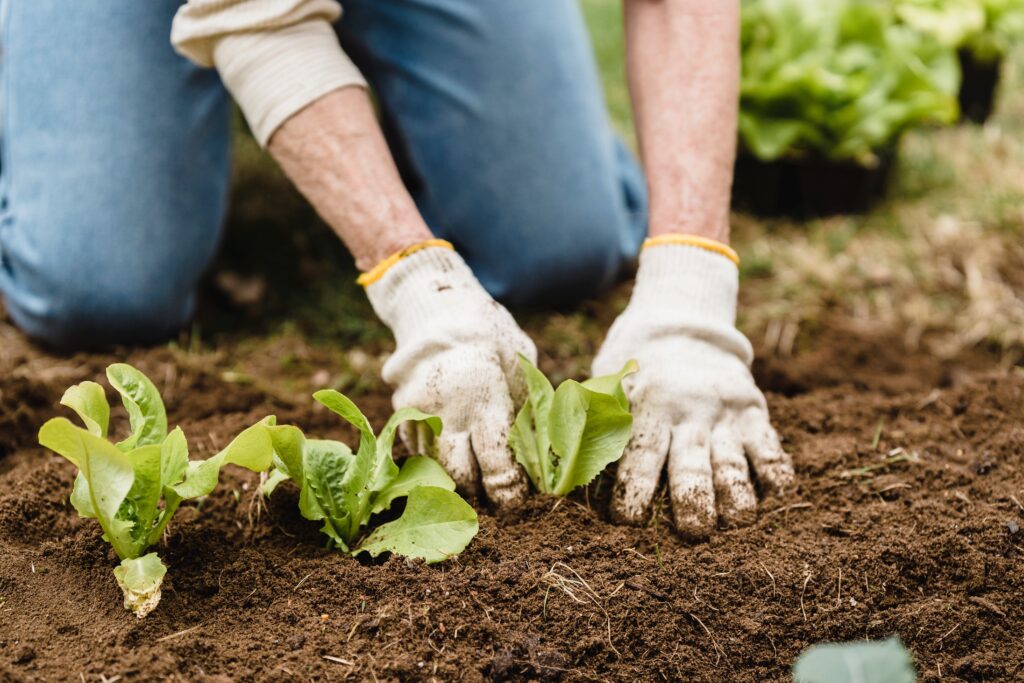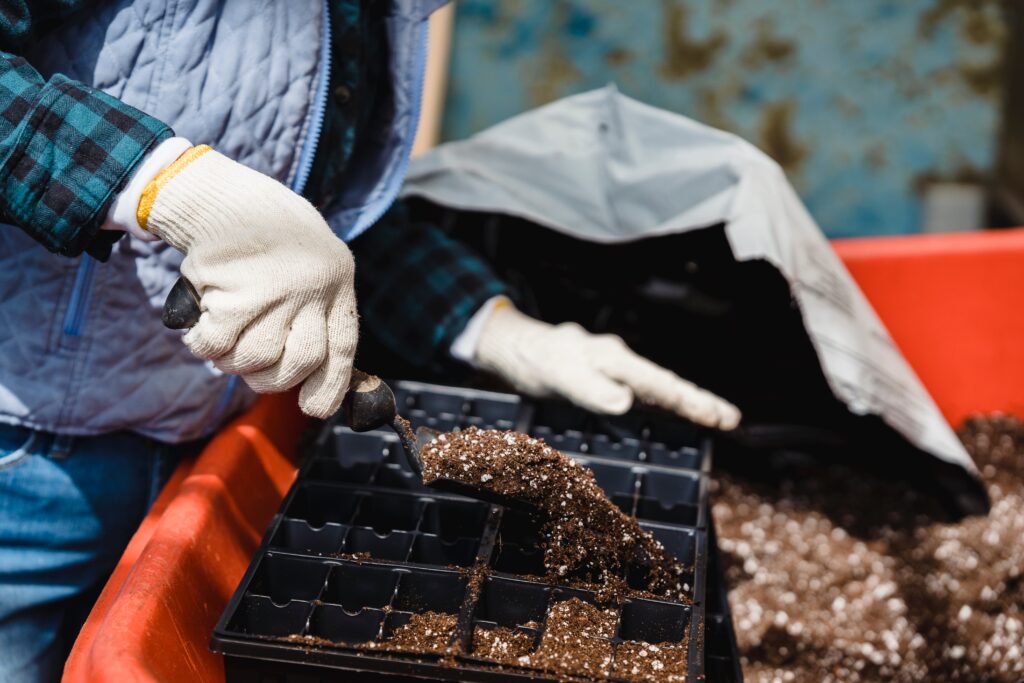To Share is to Show You Care!
Welcome to the ultimate guide on transforming your garden into a blooming paradise! If you’ve ever dreamed of a vibrant and lush garden, you’re in the right place. In this comprehensive blog post, we will delve into the best fertilization tips and strategies that will turn your gardening dreams into reality. Get ready to witness your garden flourish like never before! 🌺✨
1. Choosing the Right Fertilizer
The first step in the journey to a lush garden is selecting the right fertilizer. Consider the following factors.

1.1 Plant-Specific Formulas
Different plants have unique nutrient requirements based on their species and growth stages. Therefore, it’s crucial to select a fertilizer that matches the specific needs of your plants. For example, flowering plants may benefit from a fertilizer with higher phosphorus content to promote blooming, while leafy greens might require more nitrogen for lush foliage. Check the fertilizer packaging for N-P-K ratios, which indicate the proportions of nitrogen (N), phosphorus (P), and potassium (K) in the fertilizer.
1.2 Slow-Release vs. Liquid Fertilizers
1.2.1 Slow-Release Fertilizers
These gradually release nutrients over an extended period, providing a steady supply to plants. This is beneficial for consistent growth and reduced risk of over-fertilization. Slow-release fertilizers are suitable for busy gardeners who may not have time for frequent applications.
1.2.2 Liquid Fertilizers
These are quickly absorbed by plants, offering a rapid nutrient boost. Liquid fertilizers are often used for foliar feeding, where nutrients are applied directly to the leaves. They are convenient for providing immediate support but may require more frequent applications.
1.3 Organic vs. Synthetic
1.3.1 Organic Fertilizers
Derived from natural sources, organic fertilizers include materials like compost, manure, and bone meal. They contribute to soil health, enhance microbial activity, and release nutrients gradually. Organic options are environmentally friendly but may take longer to show results.
1.3.2 Synthetic Fertilizers
These are chemically formulated fertilizers with precise nutrient concentrations. They provide a quick nutrient boost to plants and are easily absorbed. However, they may lack the soil-enriching properties of organic fertilizers and can contribute to nutrient imbalances if not used carefully.
When choosing a fertilizer, consider factors such as your gardening preferences, the specific needs of your plants, and the convenience of application. Experimenting with different types and observing how your plants respond will help you determine the most effective fertilizer for your garden.
2. Best Practices for Fertilizing

2.1 Timing is Key
2.1.1 Early Spring
Start fertilizing when plants begin active growth in early spring. This provides a nutrient boost as they enter their growth phase
2.1.2 Mid-Spring to Early Summer
Continue fertilizing during this period to support robust growth and blooming, especially for flowering plants.
2.1.3 Late Summer
Consider a lighter application to sustain plants as they transition into the later part of the growing season.
2.1.4 Fall
For some plants, a final application in fall can promote root development and winter hardiness.
2.2 Proper Application Techniques
2.2.1 Even Distribution
Apply fertilizer evenly across the root zone to ensure that all plants receive a fair share of nutrients. This can be achieved by hand or using a spreader for larger areas.
2.2.2 Avoid Concentrated Piles
Refrain from creating concentrated piles of fertilizer, as this can lead to uneven nutrient absorption and potential damage to plant roots.
2.3 Avoid Overfertilizing
2.3.1 Follow Package Instructions
Adhere to the recommended dosage provided on the fertilizer packaging. Overfertilizing can harm plants, lead to nutrient imbalances, and negatively impact soil health.
2.3.2 Monitor Plant Response
Pay attention to how your plants are responding to the fertilizer. If you notice signs of stress, such as leaf burn or discoloration, reduce the fertilizer amount or frequency.
By timing your fertilization efforts according to the growth stages of your plants, applying fertilizers evenly and with care, and avoiding overfertilizing, you’ll optimize the benefits of fertilization while minimizing the risk of negative effects. Consistency in your approach will contribute to a healthy and flourishing garden.
3. Revolutionizing Growth: Unveiling the Power-Packed Tools Transforming Fertilization in Your Garden!”
Essential gardening tools, including trowels, pruners, and soil testers, play a pivotal role in the fertilization process. Trowels facilitate precise soil amendment, ensuring optimal nutrient distribution. Pruners aid in the careful removal of dead or overgrown plant parts, promoting healthier growth. Soil testers are indispensable, offering insights into nutrient levels, guiding gardeners on the right fertilization approach. Together, these tools create an efficient and informed fertilization process, empowering gardeners to tailor their strategies, enhance soil health, and foster a thriving garden.
3.1 Best Trowels available in the market now,
Crucial for precision, Trowels are vital in the fertilization process. They ensure accurate soil amendment, allowing gardeners to strategically distribute nutrients. This tool is indispensable for efficient and effective gardening, promoting optimal plant health and growth.
3.2 Premium selection of pruners in today’s market
Garden pruners are essential tools for maintaining healthy plants. When paired with proper fertilizers, they aid in precise trimming, promoting robust growth. These versatile tools ensure plants receive the nutrients they need, fostering a flourishing garden.
| What makes this product a must-have? a) Comfortable grip for precise cutting. b) Sharp blades for easy trimming of branches. c) Ideal for smaller hedges and precise tasks. d) Durable, long-lasting garden tool. e) Versatile use for trees, hedges, and more. | What makes this product a must-have? a) Easy to use, comfortable grip, fits well in hand. b) Durable, well-made, provides years of use. c) Sharp blades cut through anything in your yard. d) Versatile – handles thick branches up to 3/4 inches. e) Supports a small family-owned American company | What makes this product a must-have? a) Three for the price of one – great value. b) Small sizes for varied pruning needs. c) Perfect grip for comfortable handling. d) Sharp blades, reduces time in the garden. e) Includes a variety of sizes and gloves. | What makes this product a must-have? a) Great value for the price. b) Sharp blades for clean and easy cuts. c) Lightweight and easy to use. d) Versatile for various gardening needs. e) Durable and well-crafted design. |
3.3 Top-tier assortment of soil testing tools available in the current market.
Soil testers are invaluable for optimizing fertilizer application in gardening. By analyzing soil composition, they guide precise nutrient supplementation, ensuring plants receive tailored nourishment. These tools empower gardeners to create an ideal environment, promoting healthier and more productive plants.
| What makes this product a must-have? a) Helps track watering habits accurately, preventing overwatering and promoting plant health. b) Budget-friendly soil tester for both indoor and outdoor plants. c) Monitors soil moisture, light, and pH levels, providing comprehensive plant care insights. d) Sturdy construction for long-term use; no batteries required. e) Positive reviews confirm reliability, saving plants and preventing overwatering. | What makes this product a must-have? a) Praised for good quality, ensuring reliable performance. b) Measures moisture, pH, sunlight intensity, and temperature in one device. c) Makes watering easy, provides light and pH info for plant care. d) LED screen, durable build, suitable for various garden conditions. e) Ideal for both indoor and outdoor plants, offering all-in-one soil | What makes this product a must-have? a) Clear results, comfortable to hold, and insert into soil. b) Guides watering schedules, especially useful for plant health. c) Ideal for both indoor and outdoor plants, aiding various gardening needs. d) Affordable, no batteries required, and reusable for multiple applications. e) Assists in determining soil conditions for optimal plant growth. | What makes this product a must-have? a) Helps prevent overwatering, especially for indoor plants. b) Measures light, moisture, nutrients, and pH for comprehensive plant care. c) Simple operation with a needle display for easy reading. d) Convenient and eco-friendly, no need for battery replacements. e) Ideal for both indoor and outdoor gardening, aiding various plant needs. |
Conclusion
Congratulations! You are now armed with the knowledge to transform your garden into a blooming paradise. By implementing the best fertilization tips and strategies, your garden will radiate beauty, and you’ll #GrowWithPassion like never before. Get ready to witness the stunning results of your newfound gardening expertise! 🌸🌿
Frequently Asked Questions
Q1: What is the best way to fertilize a garden?
A: The best way to fertilize a garden is to choose a balanced fertilizer, follow package instructions for application, and distribute it evenly across the root zone of plants.
Q2: When should I add fertilizer to my garden?
A: Fertilizer should be added to the garden during the early spring as plants enter their active growth phase. Additional applications may be necessary throughout the growing season based on the needs of specific plants.
Q3: What does fertilization mean in farming?
A: Fertilization in farming refers to the process of providing essential nutrients to soil or crops to enhance plant growth, improve yield, and maintain soil fertility.
Q4: What does fertilization do to plants?
A: Fertilization provides plants with essential nutrients, such as nitrogen, phosphorus, and potassium, promoting healthy growth, vibrant blooms, and overall plant vigor.
Q5: Do you just sprinkle fertilizer on top of the soil?
A: No, it’s best to distribute fertilizer evenly across the root zone of plants to ensure proper absorption. Sprinkling fertilizer on top of the soil may lead to uneven nutrient distribution.
Q6: What fertilizer do tomatoes like?
A: Tomatoes prefer a fertilizer with a higher phosphorus content to promote flowering and fruit development. Look for a fertilizer labeled for tomatoes or with an N-P-K ratio like 5-10-5.
Q7: Should I water before or after fertilizing?
A: It’s advisable to water before fertilizing to ensure the soil is adequately moist. After applying fertilizer, water again to help nutrients penetrate the soil and reach the plant roots.
Q8: Is 10-10-10 good for a vegetable garden?
A: Yes, a balanced fertilizer like 10-10-10 can be suitable for a vegetable garden, providing a mix of nitrogen, phosphorus, and potassium essential for overall plant health and productivity.
Q9: What is the best fertilizer for a vegetable garden?
A: The best fertilizer for a vegetable garden depends on specific plant needs, but a balanced, all-purpose fertilizer with a ratio like 10-10-10 is generally a good choice.
Q10: What are the 4 stages of fertilization?
A: The four stages of fertilization are: attraction and recognition, union of gametes, fusion of nuclei, and activation of the zygote.
Q11: What are the 5 stages of fertilization?
A: The five stages of fertilization typically include: sperm attraction to the egg, sperm penetration, fusion of genetic material, activation of the egg, and implantation.
Q12: What is an example of fertilization?
A: An example of fertilization is the union of a sperm cell with an egg cell in animals or the fusion of pollen with an ovule in plants.
Q13: How do I apply 10-10-10 fertilizer to my vegetable garden?
A: Apply 10-10-10 fertilizer to your vegetable garden by following package instructions, spreading it evenly around the plants, and incorporating it into the soil. Water thoroughly after application.
Q14: Is Miracle-Gro a good fertilizer?
A: Miracle-Gro is a popular and effective fertilizer for many plants, providing a balanced mix of nutrients. However, it’s essential to follow application instructions to avoid overfertilization.
Q15: Which fertilizer is best for all plants?
A: A balanced, all-purpose fertilizer with an N-P-K ratio like 10-10-10 is generally suitable for a wide variety of plants, providing essential nutrients for overall growth and health.
The Informed Minds
I'm Vijay Kumar, a consultant with 20+ years of experience specializing in Home, Lifestyle, and Technology. From DIY and Home Improvement to Interior Design and Personal Finance, I've worked with diverse clients, offering tailored solutions to their needs. Through this blog, I share my expertise, providing valuable insights and practical advice for free. Together, let's make our homes better and embrace the latest in lifestyle and technology for a brighter future.





